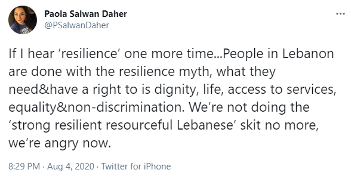by Dr Hanne Heszlein-Lossius, MD, PhD & Dr Anas M. Ismail, MD
This article is part of our Conflict & Health in the Eastern Mediterranean Series. Read the Series Introduction.
Almost 15 years of blockade and recurrent military incursions have caused significant deteriorations in living conditions for the civilian population in Gaza. Over this period, and often as a direct result of Israeli military actions, many civilians have suffered the loss of one or more of their limbs, with the latest military actions against the Great March of Return resulting in 156 new amputees. Research on the consequences, both medical and in terms of quality of life, of losing arm(s) or leg(s) among the civilian population, in such military attacks, is quite scarce.
Both authors were involved, with Professor Mads Gilbert from University of Tromsø and Palestinian doctors and research colleagues in Gaza, in a research project, culminating with a PhD project by Dr Heszlein-Lossius, that studied civilian amputees from aerial bombardments, especially drones, in Gaza. Starting in the summer of 2014, the project collected data on these patients to find out more about the long-term consequences and to understand how their amputation trauma affected their lives. The project included 254 patients with war-related traumatic extremity amputations resulting from the different Israeli military operations: Summer Rain, Cast Lead, Pillar of Defense, and Protective Edge.
The studies we produced revealed that the majority of the amputated Palestinians were young, well-educated men with large financial responsibilities, and who were often the family’s sole breadwinner. Most of the amputations were major (above the level of the wrist or the ankle) and caused severe physical disability. Pain and psychological distress were among the common problems suffered by the survivors. To lose the ability to work and the ability to care for one’s family and hence put food on the table seemed to be an important trauma adding to the pain and loss of arms or legs. One could say that the poverty they were forced into often became the most painful long-term trauma.
While investigating the different types of weapons used against the civilians in our study, it became clear to us that many of the patients had worrying symptoms and needed further medical care. 105 of the 254 patients had symptoms and were referred to the main hospital in Gaza, Al-Shifa Hospital. The patients had a variety of findings such as liver abnormalities, night sweats, malaise, and weight loss. In addition, many patients had problems at their amputation stump, such as ulceration, palpable lumps or pain.
We were also interested in researching the type of military weapons that had caused the amputation(s) among our patients in the study. We found that unarmed military airplanes carrying explosive weapons (drones) were the most common cause of amputation, a feature of the military operations in Gaza that was investigated by Human Rights Watch. These drone-attacks also caused the most severe amputations and patients who experienced them needed more surgical operations than any other type of weapons injury.
Drones have been a subject of heated debate in recent years after the expansion of their use under President Obama. Promoted as a military tool utilized to minimize civilian casualties, its use in many settings has been challenged from both humanitarian law and ethical perspectives. Moreover, its actual effectiveness as a means to achieve its intended aims, delivering surgical strikes against targets while minimizing civilian losses, is also disputed. A documentary produced in 2014 that showcases Pakistani casualties from drone attacks clearly shows how civilians, including children, are often directly targeted with complete impunity.
Following our experience in Gaza, it is very clear that in order to improve the quality of life for patients with war-related traumatic amputations the underlying reasons for their suffering must be addressed. The blockade and the recurrent military attacks certainly cause deterioration in human security in Gaza, and this is especially true for those directly affected by military actions. The use of modern weapons such as drones require greater restrictions and a humanitarian legal framework to protect civilians, in both Gaza and other areas of armed conflict in our world.




